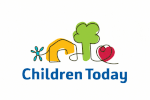|
By Cheryl Ichikawa Teachers work diligently each and every day to create an environment that is conducive to learning for all children. However, more than just choosing what materials to put on the shelves or which pictures to hang on the walls, teachers understand that in order for them to create the “right” classroom environment, they must first form a relationship with the children. Relationships are based on understanding, trust and predictability. It is about knowing each child, knowing what interests them, what triggers them and what brings them back to their center. It’s about knowing that what they do is directly correlated to how they are feeling inside. Children respond to what they experience. They imitate what they see. They repeat the things they hear. And they do things that seem interesting regardless of the consequences. The relationships that we form with children are built in part on how we respond to their actions. If we support children from a place of learning, children will grow. However, if we try to control what children do, teacher-child conflict is inevitable. It is the teacher that sets the pace and tone in the classroom. It is our response to the children and to situations that creates the dynamic that exists between the children and the teacher. Children want to be independent. They want to do things for themselves. What I have found is that children get frustrated when they constantly have to wait for teachers to help them. By creating more self-help opportunities in the classroom environment, children learn to problem-solve on their own. When children are able to find their own solutions, conflicts lessen and harmony is maintained.
Teachers learn what children are interested in through careful observation. Using what they learn, teachers can create a physical environment that is responsive to the interests and developmental needs of the children. Pictures are powerful. By capturing teachable moments, the other children in the classroom can and often do learn by visual example. A teacher’s primary goal is to create the “right” environment for children. A safe environment. A learning environment that allows children to express their feelings and work through emotions in a positive and constructive way. Doing that takes work and patience. It takes lots and lots and lots of examples. It takes supporting a child that struggles and encouraging a child who is capable of being more independent. It means providing materials that challenge children without frustrating them, and acknowledging their efforts. Success comes in the form of peace in the classroom, harmony among the children and a whole lot of learning going on. Comments are closed.
|
AuthorVarious members of the Children Today staff contribute to these blog posts. Archives
July 2024
Categories |
